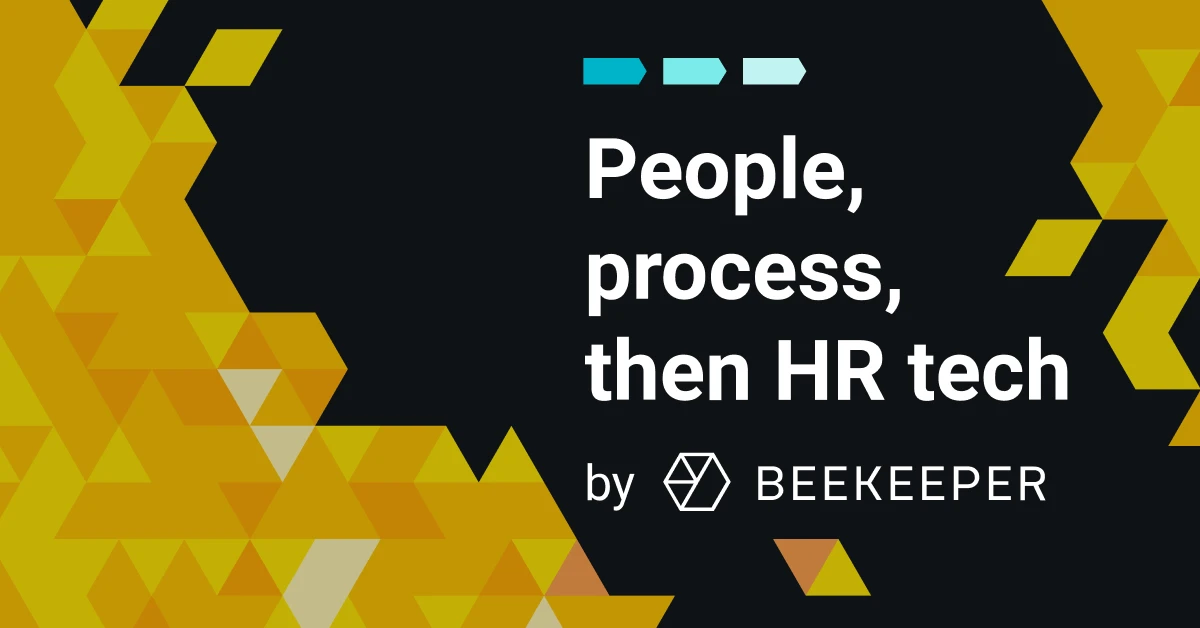Wanna vibe with your new hires? They’ve got rizz like no generation before them, no cap.* Having Gen Z in the workforce brings a new set of words to learn, but they also bring a new energy that will shape the future of work for the better.
*Not fluent in Gen Z speak? Read this to translate. And let’s not even get started on office emoji use!
What are Gen Z Workers?
Gen Z workers are defined by the year they were born. Anyone who has a birthday between 1996 and roughly 2010 falls into this demographic. They’re behind Millennials but just before the newest group, Generation A. Currently, there are five generations reflected in the workforce. That means there could be colleagues born 50 years apart working side by side
Just how many gen z in workforce environments today? Here’s a layout of the different populations currently represented at companies:
- Silent Generation: Born 1925-1945 – 2%
- Baby Boomers: Born 1946-1964 – 25%
- Generation X: Born 1965-1979 – 33%
- Millennials: Born 1980 – 1994 – 35%
- Gen Z: Born 1995 – 2010 – 5%
Gen Z has a few characteristics that really set them apart from the others. The most prominent, and relevant to the workplace is they are far more tech savvy than their predecessors. They were around 10 years old when the first iPhones came out in 2007 and have grown up with technology in their hands.
Gen Z Entering the Workforce: 5 Generations at Once
The oldest members of Generation Z are about 27 and the youngest members of today’s workforce. The younger ones are just starting high school but will be steadily streaming into the workforce over the next decade.
They’re motivated and tech savvy, but they have certain expectations of the workplace. This can be a challenge for some leaders who are under this false assumption: Gen Z, the workers who want it all. But what Gen Z wants will actually make companies better. This is an opportunity for companies to rise up to these expectations to match the social, tech-forward environments in the world today, are competitive business traits, and that will deliver better business outcomes.
Gen Z workers want to work for companies that:
- Prioritize diversity and inclusion
- Make sustainable business choices that positively impact the environment
- Ensure employee mental health and wellbeing are being tended to
- Have pay equity (and some would say this is long overdue)
- Have the latest workplace technology
Now, I know what you’re thinking. Young workers coming in and making demands. But, what they’re demanding will benefit companies and business outcomes. Look at the list. A company who is diverse and inclusive, strives to reduce their carbon footprint, takes care of their employees, and adopts technology that makes workers more productive and efficient? Yes, please!
Gen Z Workers and Their Challenges in the Workplace
So many topics look at labor shortages and the retiring Baby Boomers. But Gen Z is able and more than willing to work hard to fill the gaps industries are facing. But this generation is facing a few challenges in the workplace.
1. Engagement at Work
54% of Gen Z are disengaged in their jobs. It’s slightly higher than the other three workplace demographics (though Gen Z are lowest among the “actively disengaged” statistic.) Let’s remember that this generation entered the workforce during a period of extreme disruption: the COVID-19 pandemic. Companies went into immediate shutdowns, furloughed workers, and also went remote. It was chaotic and didn’t start these workers off on the right foot. Just as companies are still trying to find their footing, these workers are also trying to find their place at work.
2. Mental Health and Wellbeing
Just as Gen Z hits their stride in their first couple of years in the workforce, they’re hit with inflation and financial challenges. Buying a home is out of reach thanks to soaring prices and interest rates, even with a well-paying job. These financial stressors are creating an unprecedented level of stress greater than any other generation.
3. Productivity in Remote Settings
The general assumption is that Gen Z is not an office type of population. They’re more on-the-go and would fare better working from home. But when the pandemic forced office workers to go remote, the opposite was true. Several studies have shown that of the four working generations, the majority of Gen Z workers prefer to be in person. 54% report being less productive working remotely.
Gen Z Workforce Trends
Gen Z might be just 5% of today’s workforce, but by 2030 they’ll make up 30%. As they grow in numbers, they’ll have greater influence on workplace culture and begin to shape the trends. Here’s what we’re starting to see.
1. The Shift towards Flexible Work Hours
While Gen Z finds they’re not as productive working fully remotely, they do want the flexibility to make the choice of when they’re in the office or not. 63% want a hybrid work environment
Many companies are already on that track post-pandemic, but Gen Z will make sure hybrid work becomes the norm for the foreseeable future.
2. Diversity, Equity, and Inclusion
While many companies have always been good about ensuring a diverse and inclusive workplace, they are now making it part of their official strategies and policies. Companies now have dedicated DEI teams. This is all thanks to the younger generations entering the workforce who are more open in expressing their gender identities and ensuring they and their peers are represented and have a voice in society and at work.
3. Learning & Development
While the earlier generations were more likely to stick with the same career and company for their entire work life and be happy to move up the ladder at the company’s pace, Gen Z is not a sitting-still kind of population. They are movers, doers, and learners and are taking greater control in gaining experience that will help them do more and grow. They’re motivated to learn and want to work for companies that have career advancement opportunities. This will force companies to develop training and upskilling programs for their employees. But again – this trend will only benefit companies, ensuring long employee lifecycles and a promote-from-within culture that ensures institutional knowledge.
4. ESG Polices (Environmental, Social, & Governance)
We’re at a point where climate change and environmental impacts cannot be ignored. And while certain industries contribute more to greenhouse gasses than others, every business has a carbon footprint. There is a growing movement for companies to be net zero (have zero emissions) and the Paris Climate Agreement is trying to get everyone to reach that goal by 2050 (and reduce emissions by 45% by 2030.) Gen Z will hold companies accountable to this mission of sustainable business practices. And it’s working. Companies now have environmental, social, and governance councils and policies to create a roadmap to align with this global goal.
5. Digital Transformation
In a time where workers are more fluid in moving from one job to another, companies need to find strategies to boost retention. One surefire way? Workplace technology. And that means more than giving every worker a laptop. AI, machine learning, and the cloud are the future. Workers want tools that help them be more efficient, productive, and connected. That means companies need to adapt to digital workplace trends and adopt mobile tools, like a workplace app, that Gen Z can have anywhere (remember, they want a hybrid work life.) And 70% of them will switch jobs to a company just for better technology.
Companies are listening. 91% say they need more technology to satisfy the needs of Gen Z.
Pro tip: Get a mobile-first communication solution with a powerful analytics dashboard so you can track productivity metrics in real time.
Best Practices to Engage with Gen Z in the Workforce
They’re influencers. They’re ambitious. They’re tech-savvy.
Gen Z’s diverse workforce characteristics reflect who they are and what they want in life and at work.
Here’s how companies can engage with and get ready for Gen Z workers.
1. Leverage Technology for Seamless Communication
Gen Z grew up on mobile technology and they want it at work as well as in their personal lives. Companies should provide a workplace app that employees can access on their devices, especially given their preference for hybrid work. They want to be connected in real-time, and they want transparent leadership, a frontline success system offers both. Having workplace technology like Beekeeper that connects your entire company is a great tool to leverage during recruiting, too! It will attract a great number of Gen Z candidates.
Also, following the trend of wanting more connection with colleagues, a mobile-first employee app offers group chats, project teams, and content sharing to allow Gen Z to engage with other workers in a way they’re comfortable with!
2. Provide Continuous Learning Opportunities
Once you’ve got that productivity tool, it’s a great platform for giving Gen Z workers another thing they want: opportunities to learn and grow.
Use Beekeeper to create content streams with training videos and information that can teach workers new skills. The workplace is changing quickly thanks to rapid digital transformation (Hello, AI!) and they need to keep pace to work in these environments. And Gen Z is quick to pick up new digital tools. Offering training and upskilling opportunities is a great way to build retention channels and is one of the best practices for employee engagement.
3. Create a Culturally Rich and Diverse Work Environment
Gen Z wants to be compensated well, like other generational workers. But they are not just worried about themselves. They are also looking to work for companies that are culturally diverse and have cultural and gender equality in their workforce, their leadership, and their boards. Make deliberate strategies to increase the diversity of your workforce. This could mean new recruiting practices and extending your reach to new communities and methods of job postings and outreach. Having a diverse workforce brings new ideas and greater innovation, too!
4. Offer Flexible Work Arrangements
Flexible work is a term that’s thrown around a lot these days. But what does it actually mean? It’s not a free-for-all that allows workers to decide when and where they work. But it’s a couple of steps back from the traditional set-in-stone schedules and a firm stance that work must be done in the office.
Flexible work encourages employers to loosen the reins to give workers more autonomy and more control over their schedules. And this once again circles back to the workplace productivity tool. It can have powerful shift scheduling features that make sure every shift is covered and allow workers to determine when they work in a way that fits into their lives but still makes sure work is covered.
5. Encourage Social Impact
Some of the biggest and most successful companies get involved in the communities around them through employee volunteer programs. Concord Hospitality has built a thriving workplace culture with its volunteer program where associates spend time with local organizations. Not only does it do wonders for brand reputation, but it also builds community with surrounding partners and within your workforce.
6. Acknowledge and Reward Efforts
It’s no secret that employee recognition is a MUST when it comes to employee engagement strategies. It might even be the one strategy with the best ROI. Simply acknowledging an employee to the rest of the team is a serotonin-inducing, feel-good moment for that person that makes them want to keep riding that high. They want to keep up the great work.
Employee recognition examples can include:
- Announcing a birthday
- Welcoming a new hire
- Hitting sales goals or records
- Positive customer feedback about an employee
- Going above and beyond in their job
But in today’s workplace, that message needs to be amplified to the entire team, department, or company and that’s so easy to do on a mobile workplace app. Then, everyone else has the chance to comment and offer their congratulations, too! And there’s no better feeling than that for an employee.
Pro tip: Leverage the digital skills of your Gen Z workers to boost your employer brand. When their work life is good their friends will be sure to hear about it on social media! You can always offer incentives for the most creative workplace shout out, too!
7. Support Employee Well Being
Worker stress is at an all-time high. With issues related to both work and their personal lives, employees need relief. Employers can play a critical role in taking some of the mental burden off of employees. Yes, this can happen in several ways.
- Make sure you find ways to create a better work-life balance
- Offer employee education lunches and bring in an expert on mental health who offers tips on reducing stress
- Create groups at work that build connections and forge friendships
For bigger companies, if you have the means, can you provide subsidized on-site childcare? Taking care of loved ones is a huge issue right now.
Unsure how to best help? Send a survey and ask for feedback directly from employees (Beekeeper can help you do this!)
8. Bring Back the Company Softball Team
No, this isn’t a joke! While Gen X has loved the move to remote work due to family obligations, Gen Z has shown that they want to stay connected and have more face-to-face time. But that doesn’t mean it always has to be in a workplace setting. Have fun and build community by creating opportunities for companies to get together out of the office. Don’t like softball? Try a bowling league, or clubs based on mutual interests!
Get Ready for Gen Z: The Workers Who Want it All
Gone are the days of the in-demand 9-to-5 office job. Gen Z is open to all kinds of careers. In fact, 48% of them are in frontline jobs. This generation, especially Gen Z mobile workers, want certain things out of their workplace and career. At the top is technology that connects and supports them. But they’re not just making demands that will benefit themselves. Gen Z in the workforce is influencing changes that will drive better business outcomes and inspire companies to be better than they are today.
48% of Gen Z work in frontline jobs
Beekeeper Makes Work Easy

About the author
Beekeeper
We make frontline lives easier, work safer, and teams more connected so businesses can reach new heights. At Beekeeper, we’re dedicated to making frontline lives easier by connecting workers with the tools, support, and information they need to feel valued, do their best work, and drive the business forward.








